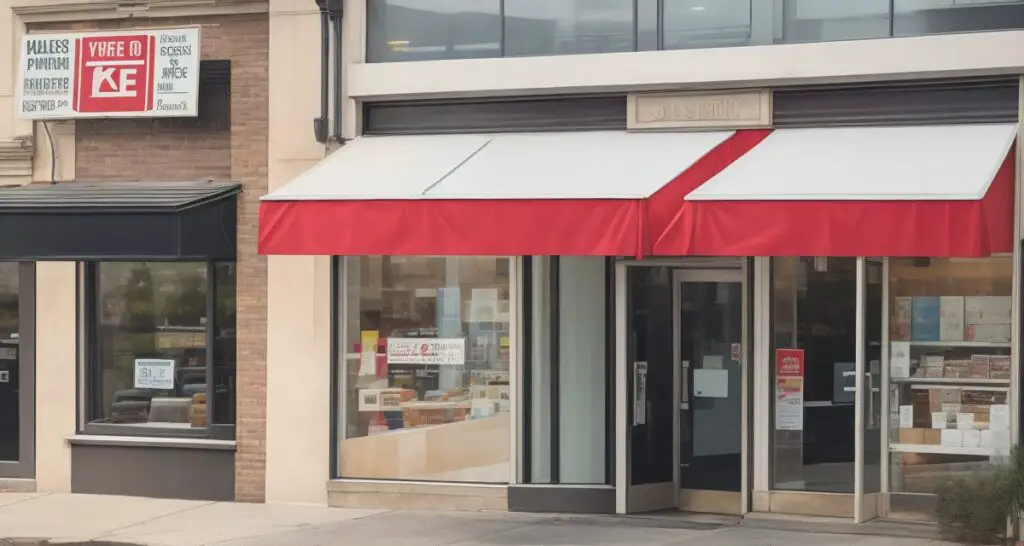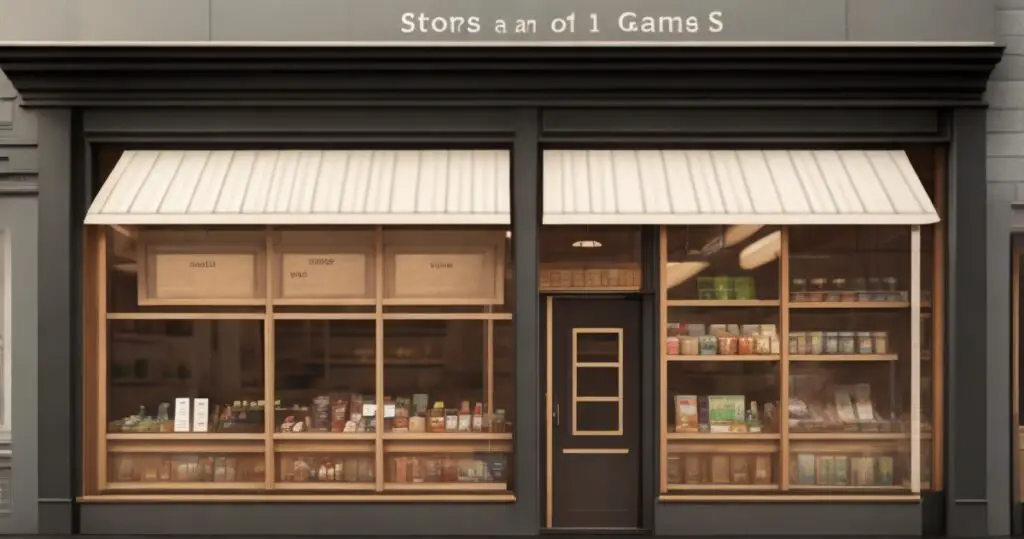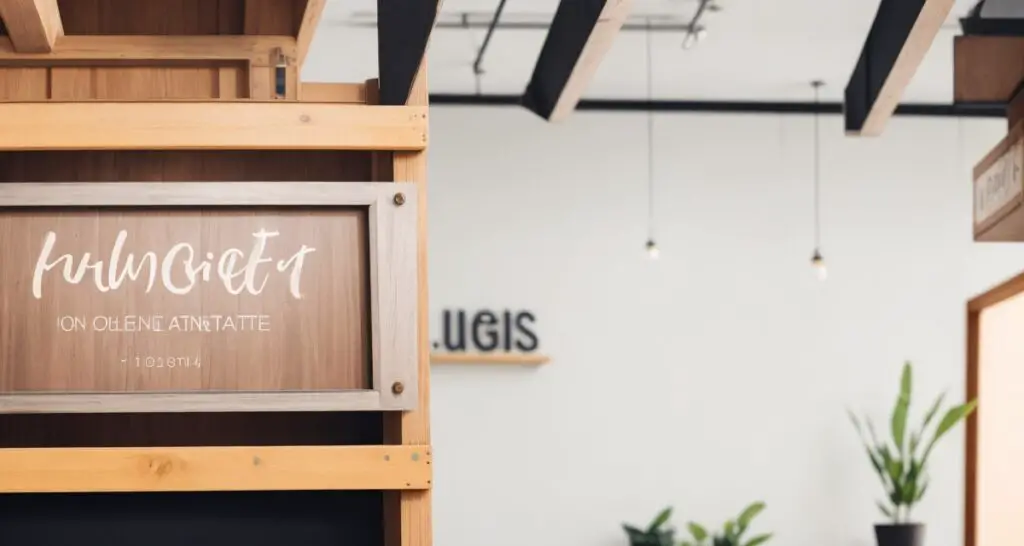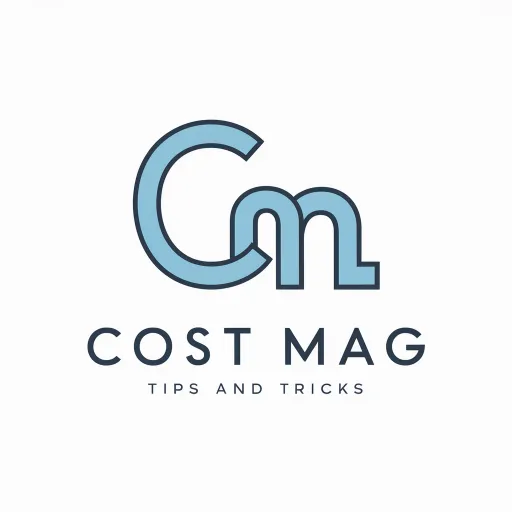A storefront sign is a vital element of any brick-and-mortar business’s identity and marketing strategy. The question is how much does it cost for sign storefront? It serves as the primary means of attracting the attention of potential customers passing by and communicates essential information about the business. Whether it’s a small boutique, a cozy café, or a bustling retail store, the storefront sign plays a pivotal role in creating a strong first impression and establishing brand recognition.
Storefront signs come in various forms, including traditional painted signs, neon signs, LED displays, awnings, and more, each offering a unique aesthetic and functionality. They typically feature the business’s name, logo, and sometimes additional information such as operating hours, contact details, or special promotions.
Beyond their practical utility, storefront signs contribute to the overall ambiance of a street or commercial area, contributing to its character and charm. In essence, they are a form of visual communication that conveys a business’s personality, values, and offerings to the world.
Where online marketing often takes center stage, the significance of a well-designed and strategically placed storefront sign should not be underestimated. It remains a tangible, physical touchpoint that can leave a lasting impression on potential customers and entice them to step inside. This introduction will delve deeper into the various types of storefront signs, their design considerations, and their impact on businesses in today’s competitive marketplace.
Exploring the Comprehensive Cost Dynamics of Storefront Signs

To gain a thorough understanding of the financial considerations associated with storefront signs, Delve into the intricate details that influence their costs. Storefront signs can encompass a wide range of expenses, and a comprehensive exploration of these factors is key to making informed decisions about your business signage investment. Let’s dissect the various elements that contribute to the overall cost of storefront signs:
Size and Complexity
The dimensions and intricacy of your storefront sign are fundamental cost determinants. Larger signs with intricate designs, 3D elements, or customized shapes generally require more materials and labor, leading to higher expenses.
Materials
The selection of materials is pivotal in cost determination. Different materials, such as metal, plastic, wood, acrylic, or glass, come with varying price points. Premium materials, special finishes, or specific brand-related materials may escalate the cost.
Illumination
Choosing between an illuminated or non-illuminated sign significantly impacts the budget. Illuminated signs, such as LED or neon signs, involve additional components, wiring, and power sources, which can elevate the overall expenditure.
Design Complexity and Branding Integration
The complexity of your sign’s design and the need for branding elements like logos, specific fonts, or color schemes can affect costs. Customized designs and seamless branding integration may require additional design fees.
Location and Installation Challenges
Consideration of the installation location is crucial. Sites that are difficult to access, at great heights, or require unique mounting solutions can increase installation costs. Specialized equipment or expertise may be necessary, adding to the expense.
Local Regulations and Permits
Compliance with local zoning regulations and permitting requirements is mandatory. Securing permits often involves fees and administrative tasks that should be factored into the budget.
Maintenance and Longevity
Long-term costs related to maintenance and durability should be considered. High-quality materials and craftsmanship might incur a higher initial expense but can result in lower maintenance costs and an extended lifespan.
Additional Features
If your sign requires extra features like digital displays, interactive elements, or remote control capabilities, these additions come with associated costs. They can enhance the sign’s functionality and visual appeal.
Quantity and Bulk Orders
Businesses in need of multiple signs, both exterior and interior, may benefit from economies of scale through bulk orders. Discounts on materials and production costs are potential cost-saving factors.
Consultation and Design Services
Enlisting the services of professional sign designers and experts can impact the overall cost. While this may increase the initial expenditure, it often results in a more effective, visually appealing, and well-planned sign.
The cost of storefront signs is a multifaceted consideration, influenced by a combination of factors that should be meticulously examined during the planning and budgeting phases. To obtain an accurate and tailored estimate for your specific storefront sign project, engaging with experienced sign professionals is highly recommended. They can evaluate your unique needs, provide expert guidance, and deliver a detailed proposal aligning with your specific requirements and budget constraints.
Varieties of signs

- Channel Letter Signs:
Channel letter signs consist of three-dimensional individual letters or shapes crafted from durable materials like metal or plastic. They are often illuminated from within, making them highly visible, especially during nighttime. These signs are commonly used for storefronts and business facades, contributing to branding and enhancing visibility.
- Monument Signs:
Monument signs are sturdy and freestanding, typically positioned at ground level. They serve a dual purpose: making a strong visual impact and providing essential information about a business or its location. These signs are particularly effective in settings where visibility from a distance is important, such as shopping centers and corporate campuses.
- Pylon Signs:
Pylon signs are tall, imposing structures that stand independently and are frequently placed near roadways, highways, or entrances to large complexes. Their towering presence is designed to capture the attention of passing motorists and pedestrians, effectively guiding them to businesses or destinations. Pylon signs often display multiple business names or logos.
- LED Signs:
LED signs leverage light-emitting diodes (LEDs) to display messages, graphics, or animations. These signs offer exceptional visibility, even in bright daylight, and are energy-efficient. They are commonly used by businesses seeking dynamic and attention-grabbing signage, such as theaters, gas stations, and retail stores.
- Neon Signs:
Neon signs are iconic for their use of neon gas and glass tubes to create vibrant and eye-catching lighting effects. These signs have a timeless appeal and are often associated with retro aesthetics. Neon signs are popular choices for businesses looking to add a touch of nostalgia and artistic flair to their storefronts or interiors.
- Digital Signs:
Digital signs employ electronic displays or screens to showcase dynamic content. They can feature videos, animations, scrolling text, or rapidly changing messages. Digital signs offer versatility and are commonly used in various settings, including retail stores, restaurants, and transportation hubs, where real-time updates and engaging visuals are paramount.
- Electronic Message Signs:
These signs use electronic technology to display programmable messages or graphics. They allow businesses to convey real-time information, promotions, or announcements effectively. Electronic message signs are highly adaptable and are often seen in front of schools, churches, government buildings, and businesses that frequently update their messages to engage with the public.
The choice of business signage type depends on factors like visibility requirements, branding goals, and the desired level of interactivity. Each type of sign offers unique advantages and can be customized to meet the specific needs of a business, making signage a versatile and impactful tool for communication and marketing.
Collaborating with Experts vs. DIY Approaches

The prospect of embarking on a do-it-yourself (DIY) signage project may appear enticing in certain scenarios. For instance, if you operate a small retail store located in a bustling downtown area, you might consider crafting and designing your own sandwich board (A-Frame) sign or window displays.
The decision to opt for a DIY approach can indeed yield initial cost savings and can be suitable for relatively straightforward endeavors, such as creating a basic lightbox sign for your window display.
When it comes to crafting high-quality, enduring, and intricate retail storefront signs, engaging the services of seasoned professionals becomes paramount. These signs demand professional craftsmanship not only to exhibit their best appearance and longevity but also to ensure safety.
Quality and Durability: Retail storefront signs often entail substantial weight, intricate materials, and intricate designs. They are typically manufactured by skilled artisans who understand the nuances of sign production. A professionally crafted sign is built to last, ensuring its longevity and sustained effectiveness.
Safety Concerns: Mishandling or improperly installing retail storefront signs can pose significant safety hazards. These signs, if not securely mounted, may potentially fall and cause injuries. Moreover, if they are illuminated, incorrect installation could lead to electrical issues, which can be hazardous or even fatal.
Long-Term Investment: Working with professionals represents a long-term investment in your business. While the upfront cost may appear higher than a DIY project, Recognize that professional signage can endure for many years without the need for extensive maintenance or replacements.
By choosing professional expertise, you establish a solid foundation for your business’s visual identity. This investment yields enduring returns, as your sign continues to attract attention and customers over an extended period.
The decision between DIY endeavors and collaborating with experts hinges on the complexity, safety considerations, and long-term goals of your signage project. For intricate and lasting retail storefront signs that adhere to safety standards and exude professionalism, working with professionals is not just a prudent choice but an investment in your business’s sustained success.
Understanding the Usual Schedule for Sign Fabrication and Installation

The time required to create and install a sign can vary depending on several factors. Let’s explore the timelines associated with different types of signs and their installation processes for a more comprehensive understanding:
Standard Printed Stickers: If you decide to order a standard printed sticker from an online print shop, you can typically expect a swift turnaround. These stickers are readily available, and you can design and place an order within a mere 24 hours.
Custom Signs: Custom signs, on the other hand, involve a more extended timeline. The duration between placing an order and having the sign ready for installation will depend on the complexity of the design and the production process. Custom signs require careful crafting to meet your unique specifications, which necessitates additional time.
Installation Time for Various Signs: The time it takes to install a sign varies based on the type of store signage you’ve chosen for your business.
- Adhesive Vinyl Decals: If you’ve acquired pre-made adhesive vinyl decals, the installation process is generally efficient. Removing an old graphic and replacing it with a new one, assuming the space is vacant, can often be completed in under 30 minutes. If there are multiple layers of stickers accumulated over several years, the process may extend to an hour or more.
- Custom Cut Signs or Full-Color Graphics: Custom cut signs or intricate full-color graphics may require more time for installation. The complexity of the design, as well as your expertise in installation, can influence the duration. For exterior vinyl graphics, it’s advisable to use weatherproof tape initially to secure the sign in place while the adhesive backing adheres more securely to the surface, ensuring long-lasting adhesion.
The timeline for sign production and installation varies widely, from the swift availability of standard printed stickers to the extended duration associated with custom sign creation. The complexity of the design, the type of sign, and whether you opt for professional installation all factor into the overall timeline. Careful planning and consideration of these factors will help ensure a smooth and timely process for your signage needs.
The Importance of Thoughtfully Crafted Signage Budgets

Establishing well-structured budgets for your signage endeavors is a fundamental step in ensuring their effectiveness and ultimate success. Signage projects encompass a wide range of possibilities, each with its unique demands and potential costs. It is essential to appreciate the finite nature of available resources and prioritize your signage investments thoughtfully.
Here are several compelling reasons why meticulous budgeting in the realm of signage is of paramount importance:
Assessing Signage Return on Investment (ROI): A well-defined budget empowers you to evaluate the return on investment (ROI) of your signage projects. This assessment enables you to gauge the efficiency of each signage endeavor, providing valuable insights into its effectiveness as a marketing tool.
Facilitating Informed Decision-Making: By adhering to a budget, you gain a comprehensive understanding of your spending patterns related to signage projects over time. This historical data equips you with the knowledge needed to make informed decisions when planning new signage initiatives or upgrades. It allows you to allocate resources efficiently and strategically.
Mitigating Financial Risk: Effective budgeting serves as a protective measure against unforeseen financial challenges. Deviating from your signage budget can potentially lead to overspending, which may have adverse repercussions for your business’s financial stability. Staying within budget helps minimize financial risks and ensures responsible resource management.
Well-crafted signage budgets are instrumental in aligning your resources with your marketing objectives and aspirations. They enable you to assess the impact of your signage investments, make informed decisions, and effectively manage your financial resources. Our commitment is to assist you in this process, ensuring that your signage projects are not only visually appealing but also financially prudent and strategically sound.
Influence of Design Complexity

It’s important to consider that costs tend to escalate with the scale of your project. When incorporating images or logos into your signage, additional expenses may be incurred. Furthermore, signage intended for exterior use typically carries added costs.
To navigate these considerations effectively, it’s advisable to engage in a collaborative dialogue with our team. This approach enables us to align your needs, location, priorities, and budget, ensuring that your investment is both purposeful and tailored to your current circumstances. As your business evolves, we can adjust and expand your signage solutions accordingly.
It’s worth acknowledging that signage represents a significant investment that has the potential to yield substantial returns. We understand that every business and entrepreneur is in a unique phase of growth and development. Recognizing these individual stages and crafting solutions that align with your specific requirements is a central aspect of our mission, making our partnership with you both engaging and rewarding.
Transform Your Business Signage into a Work of Art

Your business signage serves as a powerful representation of your company’s identity and character. A meticulously crafted, visually captivating custom sign possesses the ability not only to draw in potential customers but also to etch your company’s logo and name into their memories long after their initial encounter.
For the past eight years, ShieldCo has been dedicated to the art of transforming logos into captivating works of art. Our commitment to this craft extends to customers spanning from Frederick to as far as Colorado. We approach our work with a deep-seated passion, and we are enthusiastic about the prospect of helping you breathe life into your creative vision.
If you are intrigued by the idea of turning your business signage into a true masterpiece, we invite you to connect with us today. By reaching out, you can request a free quote and a detailed 2D mockup, allowing you to envision the transformative potential of your signage project. Your journey towards creating a remarkable visual identity for your business begins here!
Conclusion:
The cost of storefront signs is a multifaceted consideration, influenced by various factors such as size, materials, complexity, and design. Carefully evaluate your specific needs and budget constraints when planning your signage project. By collaborating with experienced professionals, you can obtain a tailored estimate and make an informed decision that aligns with your business goals and visual identity aspirations. Remember that while upfront costs may vary, a well-designed storefront sign represents a valuable long-term investment in your business’s success and visibility.
FAQs on HOW MUCH DOES IT COST FOR SIGN STOREFRONT?
How much does a typical storefront sign cost?
The cost of a typical storefront sign can vary widely based on factors such as size, materials, design complexity, and location. On average, basic signs can start at a few hundred dollars, while larger or more intricate signs can range from a few thousand to several thousand dollars.
What materials can impact the cost of a storefront sign?
Materials significantly influence the cost. Common materials include vinyl, acrylic, metal, neon, and LED. Premium or custom materials can raise the overall expense.
Are illuminated signs more expensive than non-illuminated ones?
Yes, illuminated signs, such as LED or neon signs, tend to be more expensive due to the additional lighting components and wiring required for their functionality.
Does the design complexity affect the cost of a storefront sign?
Absolutely. The intricacy of the design, including custom logos, 3D elements, and unique fonts, can increase the cost of a storefront sign.
Are there ongoing maintenance costs for storefront signs?
Yes, there may be ongoing maintenance costs to consider, especially for illuminated signs. High-quality materials and craftsmanship can reduce maintenance expenses in the long run.

